Defrosting Cinematic Turkeys of Multiple Varieties
As the ZekeFilm contributors turn their attention to notorious cinematic turkeys, I write in defense of bad movies. Or rather, I write in defense of watching them, on purpose; in defense of laughing at them at them, groaning at them, quoting them for years afterward. But in a culture that has embraced the manufacturing of intentionally bad films (the Sharknado phenomenon) I want to point you toward the quality material and away from those jokey substitutes. I’m not here to judge your viewing, but I do have a few of my own thoughts on what makes a really good “so bad it’s good” movie (sometimes called “badfilm”). It’s not as simple to deconstruct as you might think: sometimes a movie that sounds like it will be bad (low budget, no name actors, outlandish premise) turns out to be good, or even great. Night of the Living Dead falls into that category as does The Incredible Shrinking Man. And, of course, some bad movies aren’t fun to watch. They’re just bad.
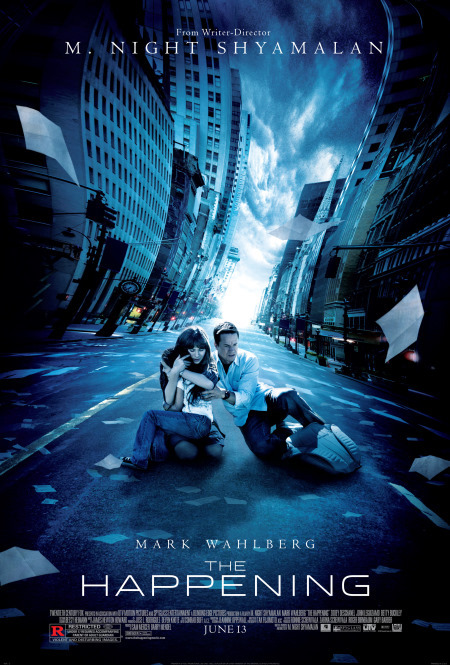 We could all list the obvious ingredients of bad film: a lack of temporal or narrative coherence (nighttime scenes obviously shot in daylight); scenes that serve no narrative function (Why must we see the sister dance in Troll 2?); a variety of visible errors (boom mikes swinging into scenes, obviously fake props); pacing and editing problems (“Rock climbing, Joel!”); quotably terrible dialogue (“Pain don’t hurt.”); performances that are obviously amateurish, out of sync with what’s happening on screen (I’m looking at you, Mark Wahlberg in The Happening) or that are shamelessly full-throttle (making Nicolas Cage the reigning king of badfilm). But there are other elements that we perhaps overlook.
We could all list the obvious ingredients of bad film: a lack of temporal or narrative coherence (nighttime scenes obviously shot in daylight); scenes that serve no narrative function (Why must we see the sister dance in Troll 2?); a variety of visible errors (boom mikes swinging into scenes, obviously fake props); pacing and editing problems (“Rock climbing, Joel!”); quotably terrible dialogue (“Pain don’t hurt.”); performances that are obviously amateurish, out of sync with what’s happening on screen (I’m looking at you, Mark Wahlberg in The Happening) or that are shamelessly full-throttle (making Nicolas Cage the reigning king of badfilm). But there are other elements that we perhaps overlook.
Firstly, for our purposes in enjoying bad movies we don’t want to see just one thing go wrong. A little badness is not interesting. It can, however, be a thrilling experience to see a film in which there is an overwhelming quantity of failures – especially when those failures seem to defy the accepted conventions of filmmaking. (I will acknowledge, however, that an otherwise decent movie can be marked forever by one exceptionally bad scene. The Sexy Sax Man in The Lost Boys comes to mind.)
The real article – the real “so bad it’s good” movie – is so much more substantially bad that you can walk around inside it and marvel at it for days.
There’s one last ingredient; the most critical of all, and the reason I reject including films like Jersey Shore Shark Attack in the category of “so good it’s bad” film. Someone needs to be trying. We may react to the movie ironically, but the movie shouldn’t have been made ironically. We love the smell of failure that is all over terrible movies, but I mean in the most literal sense. The films must, in some way, be authentic failures. It doesn’t matter if the movies were box office disasters or not; tiny passion projects or bloated studio Hindenburg’s: they should elicit a certain wonder. Someone thought this was a good idea! Someone thought this line reading made sense! Someone wrote that dialogue! We can only speculate on what the director, writers, and actors were trying to accomplish but what actually came out…well…
There’s a terrific quote from the film critic J. Hoberman about Oscar Micheaux, an early American filmmaker (whose films Hoberman said define “objective badness”): Micheaux’s films “open up a chasm between intent and actualization almost unprecedented in the history of film.” It’s the same thing that attracts us to the films of Ed Wood – the distance between his intentions and his abilities as a director. We marvel at badfilm, in part, because we know that there were people involved in these films who made the very best films they could, given their circumstances….and this was the result. And this is “lightning in a bottle” stuff. You cannot fake the ineffable mystery that is Plan 9 from Outer Space, but we certainly have gotten in the habit of trying, with all of the knowingly bad art produced in recent years. Real movie fans know the difference between the elbow-in-the-ribs badness of Sharknado 3 and an authentic, wholehearted disaster. And for the record, our love for these disasters is less cruel than you might imagine. Real badfilm fans mock in a different way. Because they love film, they know better than most how hard it is to be make a good movie, how rare truly great movies are – and how rare and special spectacularly bad ones are, as well. They recognize the perfect storm of failures that had to occur in order for this thing to have been the result. And in a genuinely “so bad it’s good” movie, it’s the struggle to be something good that gives the film its vitality.
 Because some bad films are so bizarre, so idiosyncratic, so beyond ineptitude into something strange and indefinable we begin to think, “No one but Tommy Wiseau could possible have used such inscrutable line delivery. No one but Ed Wood could have presented something so terrible with such cheerful obtuseness. No one but Claudio Fragasso could have so defiantly ignored the conventions of the English language. No one but M. Night Shyamalan….. It’s the auteur theory applied to bad movies. We know it wasn’t intentional, and so we approach these movies not just with derision but with a certain kind of admiration, an affection for the people who made them possible. That’s an affection I don’t think I could ever feel for Anthony Ferrante, director of the Sharknado films; at least not until he really tries and fails at something.
Because some bad films are so bizarre, so idiosyncratic, so beyond ineptitude into something strange and indefinable we begin to think, “No one but Tommy Wiseau could possible have used such inscrutable line delivery. No one but Ed Wood could have presented something so terrible with such cheerful obtuseness. No one but Claudio Fragasso could have so defiantly ignored the conventions of the English language. No one but M. Night Shyamalan….. It’s the auteur theory applied to bad movies. We know it wasn’t intentional, and so we approach these movies not just with derision but with a certain kind of admiration, an affection for the people who made them possible. That’s an affection I don’t think I could ever feel for Anthony Ferrante, director of the Sharknado films; at least not until he really tries and fails at something.
Don’t accept those self-consciously bad movies, those puff pieces that are all jokey titles and stunt casting, as the real thing. They’re like the fake fronts on the sets of old westerns. The real article – the real “so bad it’s good” movie – is so much more substantially bad that you can walk around inside it and marvel at it for days. It bears repeat viewings in a way those Syfy movies rarely do.
Real movie fans know the difference between the elbow-in-the-ribs badness of Sharknado 3 and an authentic, wholehearted disaster.
In a poem called “Andrea Del Sarto”, about a failed poet, Robert Browning wrote this immortal line: “Ah, but a man’s reach should exceed his grasp; else what’s a heaven for?”
The joy of badfilm is in watching someone really reach, and seeing how very, very far the reach exceeds the grasp. And sometimes, when the failure is just right, the result is heavenly.
To quote Umberto Eco, who, I’ll grant you was talking about Casablanca, but still…”Nobody would have been able to achieve such a cosmic result intentionally.
– Sharon Autenrieth
*****
With all of that in mind, we now present the initial thoughts of several willing ZekeFilm contributors whom were willing to face down and share about a particular “notorious turkey” they’d manage to avoid… until now!!! We begin with a pair of undetonated bombshells courtesy of Cannon Films, The Apple and Superman IV. Then Mike Myers grasps for enlightenment with 2008’s beard-itch, The Love Guru. The reported longest movie title of all time breaks our marquee, The Incredibly Strange Creatures Who Stopped Living and Became Mixed-Up Zombies!!?, and we leave you with the Ishtar of bad movies… Ishtar!
The Apple
(1980/Cannon Films/ dir. Menahem Golan)
by Justin Mory

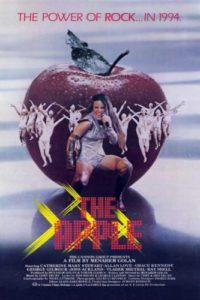 With The Apple, a film title whose mention should send a chill down the spine of self-respecting cinephiles everywhere, I can’t really say with any degree of accuracy exactly what I saw, but I can at least now claim to have seen it, and therefore have earned whatever the bad movie-watching equivalent is of the Purple Heart. (If the award doesn’t already exist, I’d suggest it be called The Marty Feldman Memorial Distended Eyeball: “Damn your eyes!” “Too late.”) For those (blessedly) not already in the know, The Apple details the eternal struggle between good and evil, God and the devil, and who-knows-glitz-what and something-or-glam-other as a pair of innocent folk singers (George Gilmour, Catherine Mary Stewart) are victimized by a ruthless record executive named Mr. Boogalow (Vladek Sheybal) and his all-purpose, near-universal, omnipotent music label/slang word/mark of the beast/new world order BIM (Boogalow International Music) in the savagely show business-oriented, dystopian future of 1994. A 1980 West German/American sci-fi disco musical that indescribably combines Biblical elements from Genesis and Revelations with the Faust legend, and possibly The Phantom of the Opera and The Rocky Horror Picture Show (1975) thrown in for good measure, The Apple contains no less than 14 audience-punishing musical numbers that successively exceed on garish excess to the point where a screen overdose of stage smoke, glitter, colored lights, glowing sequins, and general “campiness gone horribly horribly wrong” will undoubtedly traumatize unwary viewers for generations to come.
With The Apple, a film title whose mention should send a chill down the spine of self-respecting cinephiles everywhere, I can’t really say with any degree of accuracy exactly what I saw, but I can at least now claim to have seen it, and therefore have earned whatever the bad movie-watching equivalent is of the Purple Heart. (If the award doesn’t already exist, I’d suggest it be called The Marty Feldman Memorial Distended Eyeball: “Damn your eyes!” “Too late.”) For those (blessedly) not already in the know, The Apple details the eternal struggle between good and evil, God and the devil, and who-knows-glitz-what and something-or-glam-other as a pair of innocent folk singers (George Gilmour, Catherine Mary Stewart) are victimized by a ruthless record executive named Mr. Boogalow (Vladek Sheybal) and his all-purpose, near-universal, omnipotent music label/slang word/mark of the beast/new world order BIM (Boogalow International Music) in the savagely show business-oriented, dystopian future of 1994. A 1980 West German/American sci-fi disco musical that indescribably combines Biblical elements from Genesis and Revelations with the Faust legend, and possibly The Phantom of the Opera and The Rocky Horror Picture Show (1975) thrown in for good measure, The Apple contains no less than 14 audience-punishing musical numbers that successively exceed on garish excess to the point where a screen overdose of stage smoke, glitter, colored lights, glowing sequins, and general “campiness gone horribly horribly wrong” will undoubtedly traumatize unwary viewers for generations to come.
The Apple contains no less than 14 audience-punishing musical numbers that successively exceed on garish excess to the point where a screen overdose of stage smoke, glitter, colored lights, glowing sequins, and general “campiness gone horribly horribly wrong” will undoubtedly traumatize unwary viewers for generations to come.
And if that’s your bag you’re welcome to it. Myself, I needed the support of a group of friends to survive the ordeal (which, I should add, is really the only way to watch a bad movie as a solo snarkfest seems simply sad), and our attempts at a running Mystery Science Theatre 3000-style commentary at least made the, say, approximately 3-hour-long, non-double entendre “Coming” number slightly more bearable. (A scene, I should also add, whose endless, multiple bed-gyrating choreography is, if possible, more obscene than mere pornography.) Almost dreamlike in its nonsensicality (which, if it isn’t already a word, I’m here coining as being the best descriptor for the movie), the bar for my (un)willing suspension of disbelief was so lowered by The Apple‘s approximately 17-hour running time that I actually accepted without question the sudden deus ex machina appearance of a sky-floating, day-glowing Cadillac at film’s (merciful) end as the most sane thing I’d yet seen in the movie. For a film whose single (intentionally) enjoyable moment is a 35-second shot of a group of habited nuns breaking into synchronized dance during BIM government-mandated “exercise hour” (Ah, the ’80s!), the rest of The Apple is as witless as it is dull, and as mind-numbing as it is over-indulgent.
Finally, apologies for any (equally) witless attempts at “wit” above and for my “review” here that isn’t really a review at all; however, I feel entirely justified in presenting the preceding 500 loosely-articulated, poorly-written words as aptly describing a “movie” that, in my considered opinion, isn’t really a movie at all. And with that, ladies and gentlemen, I give you The Apple.
Superman IV: The Quest for Peace
(1987/Cannon Films/dir. Sidney J. Furie)
by Robert Hornak
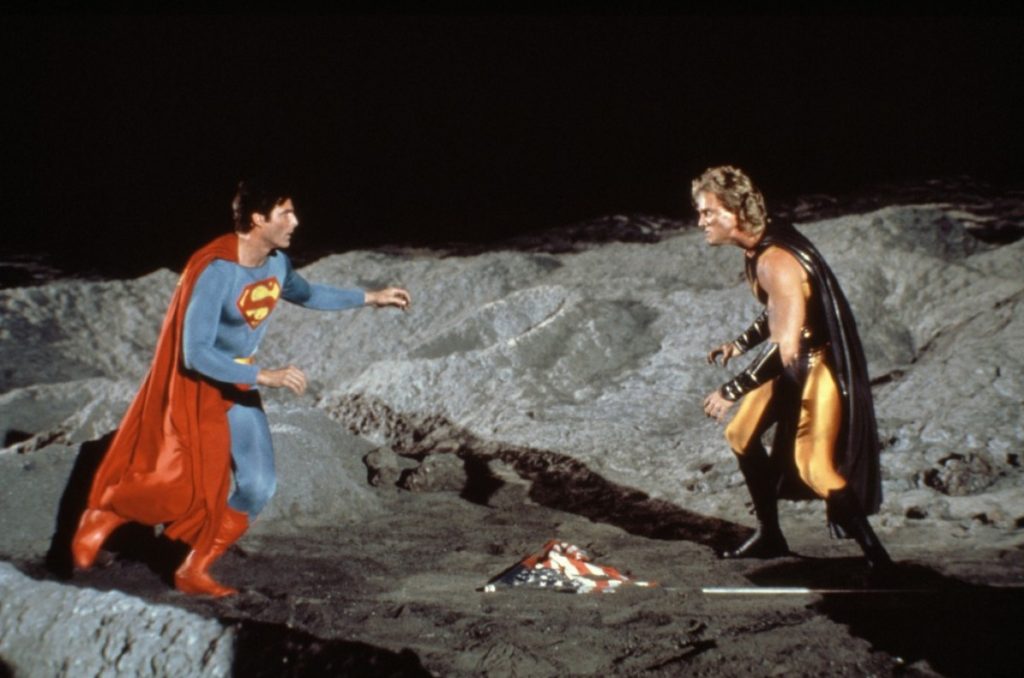
 It’s not fair to any movie that’s actually good to call Superman IV good, but full disclosure: I watched it on election night and, not to tip my political persuasion too much, I needed an escape into a less toxic alternate reality than the one being parsed on fivethirtyeight.com. And this magnificently vestigial sequel fit the bill by at least giving me a clear black hat/white hat dichotomy that didn’t require, say, blocking the blinding glare of a candidate’s obvious sins with the giant circular disc of tortured Facebook justifications. Here, highly electable Superman is up to his do-gooding to-do list, even detouring from his typical Earth-bound duties to include a rescue of cosmonauts at the Russian space station for seemingly the sole purpose of establishing that there is, in fact, space, while Lex Luthor does the escape-from-jail routine, aiming once again to rid himself of his pesky Nemesis of Steel. Later, after a young boy shames Superman into shot-putting every nuke on Earth into the sun (somehow avoiding an Earth-destroying megablast at the edge of the atmosphere), Luthor breaks the cartoony international détente by cartoonily building an anti-Superman from a single strand of superhair baked in protoplasm and jettisoned into the sun. Oddly voiced by Hackman and unimaginatively christened “Nuclear Man” (then, “Superman” isn’t exactly Dickens), the two über-men fight, first downtown, then up on the moon, like you do.
It’s not fair to any movie that’s actually good to call Superman IV good, but full disclosure: I watched it on election night and, not to tip my political persuasion too much, I needed an escape into a less toxic alternate reality than the one being parsed on fivethirtyeight.com. And this magnificently vestigial sequel fit the bill by at least giving me a clear black hat/white hat dichotomy that didn’t require, say, blocking the blinding glare of a candidate’s obvious sins with the giant circular disc of tortured Facebook justifications. Here, highly electable Superman is up to his do-gooding to-do list, even detouring from his typical Earth-bound duties to include a rescue of cosmonauts at the Russian space station for seemingly the sole purpose of establishing that there is, in fact, space, while Lex Luthor does the escape-from-jail routine, aiming once again to rid himself of his pesky Nemesis of Steel. Later, after a young boy shames Superman into shot-putting every nuke on Earth into the sun (somehow avoiding an Earth-destroying megablast at the edge of the atmosphere), Luthor breaks the cartoony international détente by cartoonily building an anti-Superman from a single strand of superhair baked in protoplasm and jettisoned into the sun. Oddly voiced by Hackman and unimaginatively christened “Nuclear Man” (then, “Superman” isn’t exactly Dickens), the two über-men fight, first downtown, then up on the moon, like you do.
It’s like Superman II swallowed a bucket of Kryptonite.
The movie is rich with the bargain basement ethos of world-class cheese mavens, Golan-Globus, wedged unceremoniously in their canon amongst the likes of Death Wish IV and Penitentiary III, the franchise was on the ropes, no longer in the gilded-by-comparison Salkind years and still decades away from the Warner Bros resurrection, here the sad effort’s wrapped in a blanket of the worst special effects 1987 had to offer. Everything is spared to give us a Lois Lane skyscraper plummet that reminds one of a particularly ambitious South Park shot, a small crowd of civilians floating on plainly visible wires like day-playing marionettes, Nuclear Man hatching from the belly of the sun animated like a Saturday morning cartoon, and scores of Superman flying shots matted less convincingly than your kid’s “one eye shut, action figure held aloft” trick. Calling out these demerits would be cruel if the story and imagination transcended it, but the jumpy rollout of scenes drains the story of any life whatsoever. It’s like Superman II swallowed a bucket of Kryptonite. Even the occasional flashes of charming nerdiness from usually game Christopher Reeve seem embarrassed. One unexpected bonus: the entire lead cast from the original returns for more – how many fourth installments of any franchise from the pre-Potter, pre-mega-serialized era can boast such continuity of faces? Sadly, there’s not a decent scene among them, most of the motivations and plot logic slashed and trashed in the editor’s trim bin. Meanwhile, what’s deemed keepable is dubious: an obligatory flying scene with Lois over a montage of obvious stock footage and a sadly executed Three’s Company-level sequence where Clark/Superman negotiates a double date with Lois and the new newspaper chief’s daughter – none of it set up in any previous scene… In fact the film’s greatest fault is its lack of sufficient segues. It’s a strange wish for a movie that’s so hard to watch, but Superman IV would’ve been so much more super if it’d only been longer.
The Love Guru
(2008/Paramount Pictures/dir. Marco Schnabel)
by Max Foizey
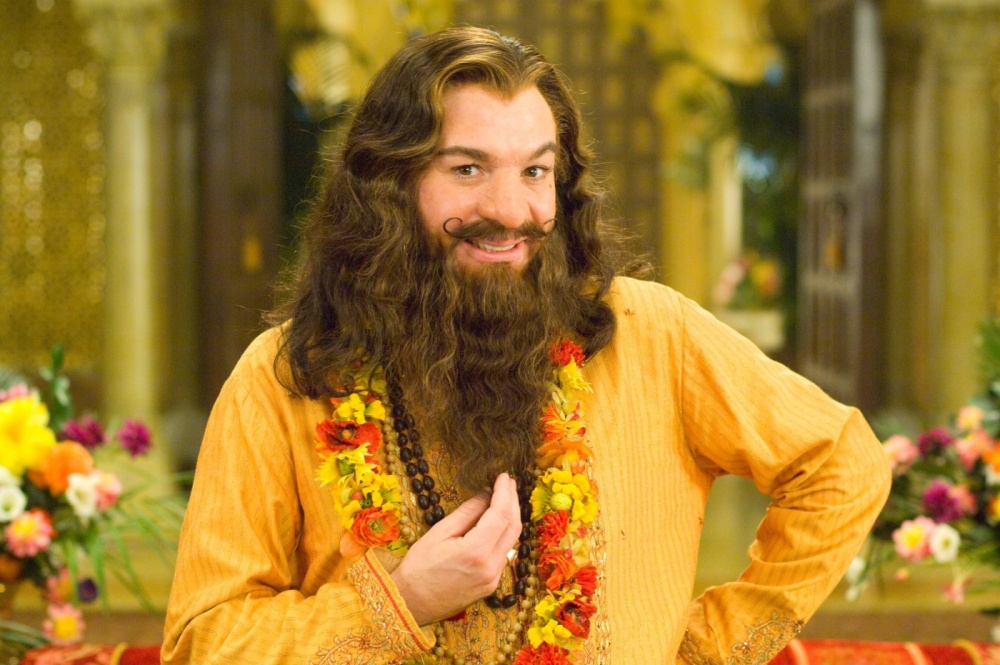
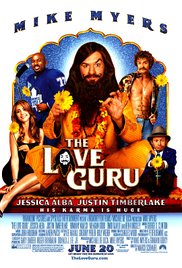 On the press tour for his film The Love Guru, Mike Myers spoke about how his father’s death lead to the creation of his new character, The Guru Pitka. Myers developed the character through stage shows before working on the script for the film. Maybe Pitka would have worked as a sketch comedy character, I’m not sure. But he certainly cannot carry a feature film.
On the press tour for his film The Love Guru, Mike Myers spoke about how his father’s death lead to the creation of his new character, The Guru Pitka. Myers developed the character through stage shows before working on the script for the film. Maybe Pitka would have worked as a sketch comedy character, I’m not sure. But he certainly cannot carry a feature film.
In 2008, hot off the success of his Austin Powers and Shrek franchises, Myers thought Pitka was his next slam dunk. Turns out it was his legendary air ball. It’s not that Guru Pitka isn’t a funny character. He’s so over-the-top in looks and actions that you want to laugh at him. He’s playing pop hits with a sitar. His Hindu greeting is “Mariska Hargitay.” C’mon, that’s pretty funny.
Pitka is upset that he’s not as famous as Deepak Chopra, and is obsessed with appearing on Oprah, convinced that will make him the world’s number one guru. When he’s hired by the Toronto Maple Leafs to help one of their star players get through personal trauma, he must make the choice between being the best guru he can be, and being the most famous guru he can be. There’s a bit of a statement to be made here about monetizing spirituality, but the film doesn’t delve into that as deep as it could have.
This isn’t lowbrow humor, it’s lowest brow humor.
Kudos to Mike Myers for recognizing how funny Justin Timberlake is way back in 2008 and for giving him such an absurd character to play. I wish he was in the film more. Myers brings Austin Powers alum Verne Troyer along for this ride, but the jokes poking fun at his height are stale. Jessica Alba is game for whatever her role requires, unfortunately, it’s not much.
When most every joke or play on words deals with genitals and each gag delivers less laughs than the previous one, you have a comedy that runs out of steam incredibly fast. This isn’t lowbrow humor, it’s lowest brow humor.
It’s interesting to me that Myers has been friends with Deepak Chopra for many years, since the Pitka character seems to exist as an example that celebrity spiritual gurus are money hungry charlatans. There’s an anger beneath the surface of Myers’ portrayal of Pitka. I hope he worked out whatever he needed to while making this film, since it doesn’t seem likely we will see the further misadventures of The Love Guru.
The Incredibly Strange Creatures Who Stopped Living and Became Mixed-Up Zombies!!?
(1964/Morgan-Steckler Productions/dir. Ray Dennis Steckler)
by Jim Tudor
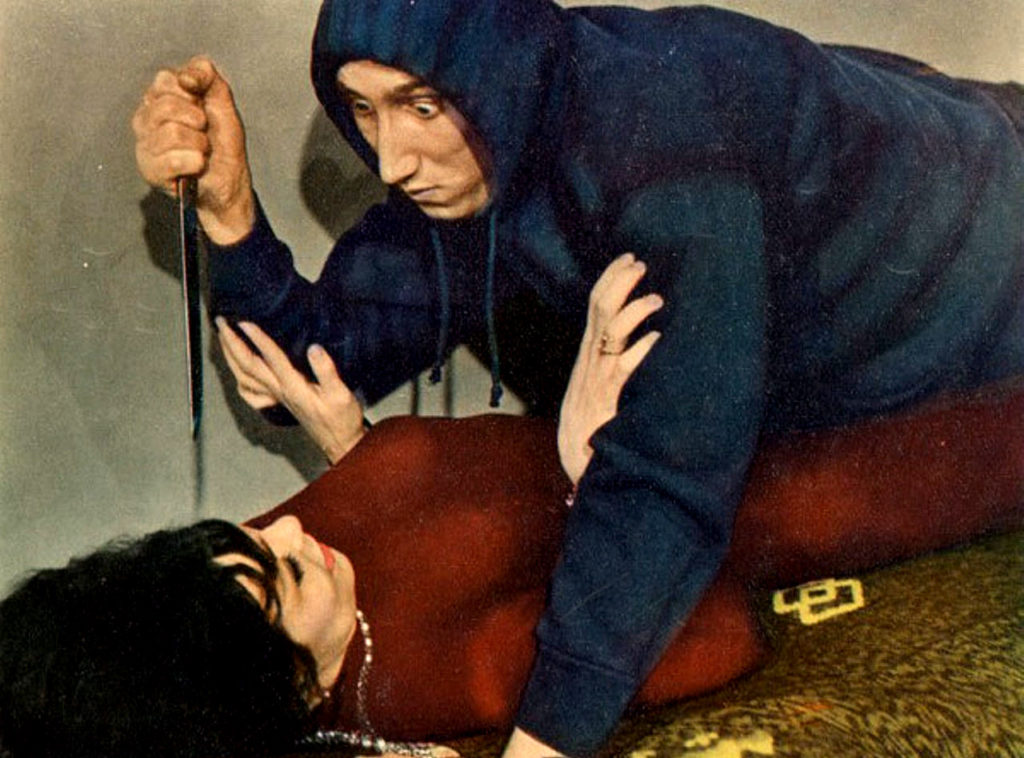
 550 words. By my own editorial decree, that’s the stated maximum length of these “Film Admissions” entries. It’s no secret that some of us have trouble staying under that word count, myself included. And now… what did I go and do? I selected the one “Notorious Turkey” rendered infamous first and foremost for its ridiculously long title: “The Incredibly Strange Creatures Who Stopped Living and Became Mixed-Up Zombies!!?” And on top of that, I just wasted a bigger considerable chunk of my space with this lament. Fortunately, I don’t have all that much to say about The Incredibly Strange Creatures…”
550 words. By my own editorial decree, that’s the stated maximum length of these “Film Admissions” entries. It’s no secret that some of us have trouble staying under that word count, myself included. And now… what did I go and do? I selected the one “Notorious Turkey” rendered infamous first and foremost for its ridiculously long title: “The Incredibly Strange Creatures Who Stopped Living and Became Mixed-Up Zombies!!?” And on top of that, I just wasted a bigger considerable chunk of my space with this lament. Fortunately, I don’t have all that much to say about The Incredibly Strange Creatures…”
In his brief interview on the commemorative 41st Anniversary Edition DVD from 2004, the film’s maker, the late Ray Dennis Steckler (also responsible for those indie classics Rat Pfink a Boo Boo, The Thrill Killers, and The Hollywood Strangler Meets the Skid Row Slasher) explains that he had a very small budget, so he wanted a really long title to compensate. Makes about as much sense as anything else about this film.
Steckler, who also stars in the film under the name “Cash Flagg”, says he wanted a movie with dancing girls, amusement park rides, teenagers, and some monsters. Done, done, done and done, and in that order of quantity, to boot. And, that’s really about it. I confess that I’ve had this DVD sitting unwatched in my horror section for years. How was I to have known its more of a musical?
This is the $38,000 work of a prolific director who voluntarily wanted to be credited as “Cash Flagg”. 550 words can’t begin to suppose any significance of that, if there is any.
Over and over again, we cut back to a nightclub stage, complete with an unfunny comedian host telling dusty old jokes. And over and over again, the same bunch of dancing come out to perform more barely choreographed, barely rehearsed numbers. Cut to a few minutes of roller coaster-mounted camera footage. A little bit of stuff with the “teenagers”, what with their pompadours and beehive hairdos. Then back to the club for a striptease act that never quite strips. Then, monsters show up and try to kill everyone. It’d all be terminally repetitive if not for two reasons: some amusing editing, and Vilmos Zsigmond. That’s right: Despite the sheer lack of production value or coherent story, the actual assembly of the shots – so essential to any movie – has spark, pop, and even humor. As for Zsigmond, the celebrated late cinematographer of Close Encounters and McCabe & Mrs. Miller, effectively applied his early talents here, doing a lot with obviously nothing. At least, that appears to be the case – the image quality of the DVD leaves a lot of room for improvement.
Why The Incredibly Strange Creatures Who Stopped Living and Became Mixed-Up Zombies!!? exists I still can’t say. But why ask why? This is the $38,000 work of a prolific director who voluntarily wanted to be credited as “Cash Flagg”. 550 words can’t begin to suppose any significance of that, if there is any. My take on this film might be as dodgy and incoherent as it itself is. But at least its reflective of it’s source – and somehow still within the stated word-count. What’s in a title, anyway?
Ishtar
(1987/ Columbia Pictures/ dir. Elaine May)
by Sharon Autenrieth
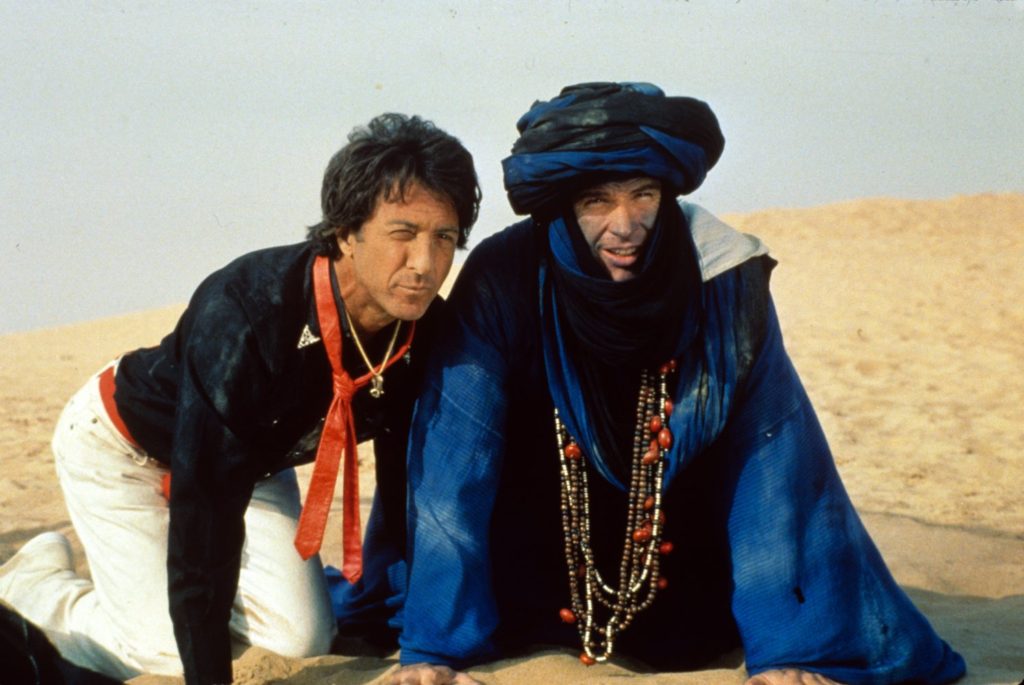
 What a disappointment. I watched Ishtar, a famously bad movie, a legendary big budget flop, and it wasn’t bad enough to be fun. It was just bad.
What a disappointment. I watched Ishtar, a famously bad movie, a legendary big budget flop, and it wasn’t bad enough to be fun. It was just bad.
In 1987 Dustin Hoffman and Warren Beatty were both still at the height of their careers and the two of them together probably seemed liked a can’t-miss, particularly in a film written and directed by Elaine May. May had connections to both actors: she’d been an uncredited writer on Hoffman’s Tootsie, and wrote the screenplay for Beatty’s Heaven Can Wait. Those were both hits with warm, witty scripts. So what went wrong with Ishtar? I was actually enjoying the movie through its first act, and not because it was laughably bad. Beatty and Hoffman play a singer/songwriter team, Rogers and Clark, who see themselves in the tradition of Simon and Garfunkel. They’re not Simon and Garfunkel, though. Rogers is barely a singer, and their songs are terrible, terrible, terrible. And yet, in each other they find kindred spirits. Their mutual admiration despite the derision of those around them is a bit like the central relationship in this year’s Florence Foster Jenkins (a far superior film, ultimately). Before the term “bromance” was a thing, Rogers and Clark had a deep and abiding bromance.
You might get a decent nap out of Ishtar, but not much else. It’s not as catastrophically bad as the legends tell us, but it’s bad enough.
Unfortunately for me, the viewer, Ishtar doesn’t stick with the small story of lovable losers. Rogers and Clark are persuaded by their manager to become a cover act and take a job at a hotel in Morocco – where they are, inexplicably, a hit. That becomes nearly irrelevant to the plot, though, as they are swept up in intrigues between the CIA, a guerilla group, and the Emir of Ishtar. There are unfunny gags aplenty involving a female rebel (Isabelle Adjani) disguised as a boy, a blind camel, and Hoffman’s hamfisted pretense of translating for arms dealers. I suspect someone was trying to capitalize on the same comedy/adventure terrain mined frequently in the 80s in movies like Romancing the Stone and Raiders of the Lost Ark. But Ishtar is far dumber, and slower than those movies. Hoffman holds up as well as he can under this script and plot (although the translation scene is an embarrassment), but Beatty is shockingly dull and uncharismatic. He looks and sounds as if he’s had all the life drained out of him. I once had a high school civics teacher who seemed as if he was just trying to get through every class, filled in equal measure with contempt for his students and for himself, as if any reason for his work was long forgotten and any hope for the future invisible from where he sat. Warren Beatty in Ishtar reminded me of that teacher.
So this turkey is a bust even as a turkey – unless you’re looking for the sleep that too much turkey often produces. You might get a decent nap out of Ishtar, but not much else. It’s not as catastrophically bad as the legends tell us, but it’s bad enough.

